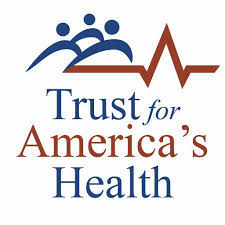TFAH: Persistent Underfunding of America's Public Health System Makes the Nation Vulnerable to Disasters and Puts Lives at Risk
Funding for public health programs via the CDC budget decreased by 10 percent over the last decade while public health risks grew
 (Washington DC) - April 24, 2019 - Chronic underfunding of the nation's public health infrastructure has left the nation vulnerable to serious health and safety risks, according to a new report released today by Trust for America's Health.
(Washington DC) - April 24, 2019 - Chronic underfunding of the nation's public health infrastructure has left the nation vulnerable to serious health and safety risks, according to a new report released today by Trust for America's Health.
The report, The Impact of Chronic Underfunding on America's Public Health System: Trends, Risks, and Recommendations, 2019,examines federal, state, and local public health funding trends and recommends needed investments and policy actions to prioritize prevention and effectively address 21st century health threats.
The federal government, primarily through the U.S. Centers for Disease Control and Prevention (CDC), provides critical support for the nation's public health infrastructure including by funding a substantial portion of state and local public health programs. But, between Fiscal Year (FY) 2010 - Fiscal Year 2019, the CDC's budget fell by 10 percent when adjusted for inflation. Cuts to the CDC budget have direct impacts on state and local public health departments' budgets. In 2018, 17 states and the District of Columbia cut their public health spending.
"Our country is grappling with unprecedented public health problems including the opioid crisis, the increasing number of Americans with chronic diseases, virulent infectious diseases and a growing number of weather-related emergencies," said John Auerbach, President and CEO of Trust for America's Health. "The CDC budget is simply not sufficient to address these demands."
 John Auerbach"At a time when the country's health security threats are increasing, reducing spending to prevent and respond to these risks is dangerous and makes Americans less safe," Auerbach said.
John Auerbach"At a time when the country's health security threats are increasing, reducing spending to prevent and respond to these risks is dangerous and makes Americans less safe," Auerbach said.
"CDC funding represents the majority of public health funding nationally and locally. When CDC funding is cut, state and local governments are often forced to reduce funding for critical programs including those to prevent chronic and infectious diseases, to protect environmental health and to provide vaccinations for children, among many others. These are programs Americans need and support. They shouldn't be constantly on the chopping-block," Auerbach said.
Among the Report's Key Findings Are:
- Over the past decade, the Centers for Disease Control and Prevention's program funding-more than half of which goes to states, localities, and other nonfederal partners-decreased by 10 percent, after adjusting for inflation. At the same time, substance misuse has skyrocketed, the incidence of obesity and related health problems continue to climb, and the threat of weather-related emergencies is on the rise.
- Federal funding cuts negatively affect state health departments as these funds are a primary source of state public health budgets. On average, federal funding comprises 48 percent of state public health budgets. Similarly, these spending cuts have serious consequences for local health departments given that federal and state allocations constitute a substantial portion of local health departments' budgets.
- Seventeen states and the District of Columbia cut their public health funding in FY 2018.
- One-fifth of local health departments reported decreases in their FY 2017 budgets.
- Multiple years of funding cuts contributed to more than 55,000 lost jobs at local health departments from 2008-17. These cuts undermine efforts to hire, train, and retain a strong public health workforce, which in turn limits governments' ability to effectively protect and promote the health of their residents.
- Cuts to public health funding often result in higher health care costs as preventable illnesses and injuries are major causes of hospitalization and other medical interventions.
The Report's Topline Recommendations Include:
- Increase federal investments in public health. To protect the health and safety of all the country's residents we need more funding for public health programs, not less.
- Provide sufficient, full-year funding for federal agencies to avoid interruptions in funding for critical health security programs.
- Increase state and local investment in public health, prioritizing prevention and the social determinants of health.
- Work across sectors to improve the effectiveness and efficiency of public health investments.
- Ease coordination of funding from multiple sources.
# # #
Trust for America's Health is a nonprofit, nonpartisan organization that promotes optimal health for every person and community and makes the prevention of illness and injury a national priority. www.tfah.org
- Tags:
- Centers for Disease Control and Prevention (CDC)
- Disaster Preparedness
- emergency preparedness
- health risks
- health security threats
- John Auerbach
- public health funding
- public health infrastructure
- public health programs
- public health risks
- safety risks
- state health departments
- TFAH
- Trust for America’s Health (TFAH)
- virulent infectious diseases
- Login to post comments